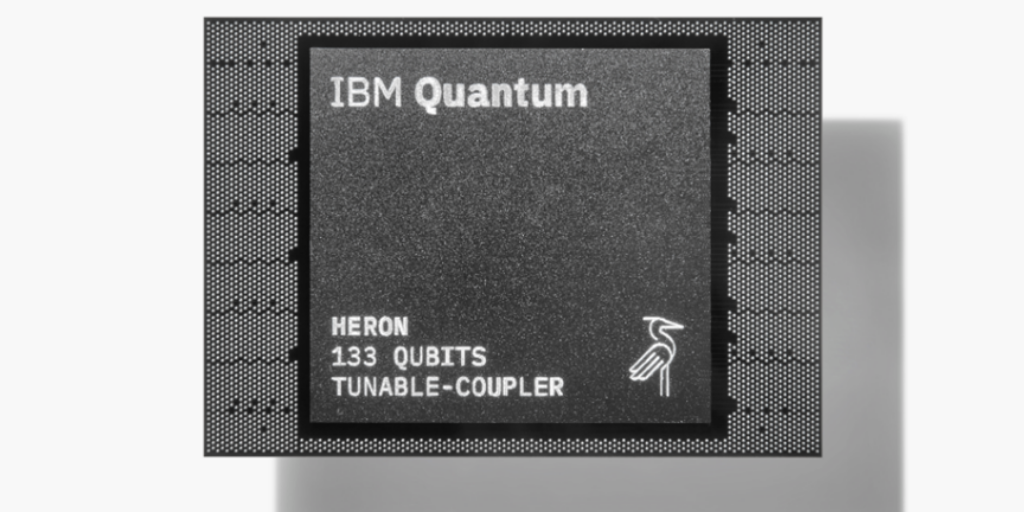Today, at its annual IBM Quantum Summit in New York, the company debuted the 133-qubit Quantum Heron, the first in what IBM said will be a series of utility-scale quantum processors whose architecture has been engineered over the past four years. IBM said the processor “deliver(s) IBM’s highest performance metrics and lowest error rates of any IBM Quantum processor to date.”
IBM also unveiled IBM Quantum System Two, a modular quantum computer and part of IBM’s quantum-centric supercomputing architecture. The first IBM Quantum System Two, located in Yorktown Heights, New York, has begun operations with three IBM Heron processors and supporting control electronics.
The consensus among industry analysts is that in its current stage of development, quantum has attracted attention from organizations exploring its potential to solve workload solution. Touting demonstrations of its 127-qubit Quantum Eagle processor earlier this year, IBM said more organizations are looking at quantum as a scientific tool for utility-scale classes of problems in chemistry, physics, and materials “beyond brute force classical simulation of quantum mechanics.” Those organizations include the U.S. Department of Energy’s Argonne National Lab, the universities of Tokyo, Washington, Cologne, Harvard, Qedma, Algorithmiq, UC Berkeley, Q-CTRL, Fundacion Ikerbasque, Donostia International Physics Center, and the University of the Basque Country, as well as IBM.

IBM Quantum System Two
This includes experiments already running on the new IBM Quantum Heron, which IBM is making available for users today via the cloud. IBM said Heron has “significantly improved error rates, offering a five-times improvement over the previous best records set by IBM Eagle.”
“We are firmly within the era in which quantum computers are being used as a tool to explore new frontiers of science,” said Dario Gil, IBM SVP and Director of Research. “As we continue to advance how quantum systems can scale and deliver value through modular architectures, we will further increase the quality of a utility-scale quantum technology stack – and put it into the hands of our users and partners who will push the boundaries of more complex problems.”
The company said the System Two is the foundation of IBM’s next generation quantum system architecture, combining scalable cryogenic infrastructure and classical runtime servers with modular qubit control electronics. The architecture brings together quantum communication and computation, assisted by classical computing resources, and leverages a middleware layer to appropriately integrate quantum and classical workflows, according to the company.
IBM also announced updated its 10-year quantum development roadmap in which Quantum System Two will house IBM’s future generations of quantum processors, adding that “these future processors are intended to gradually improve the quality of operations they can run to significantly extend the complexity and size of workloads they are capable of handling.”
![]()
The company also released details for a new generation of its software stack, within which Qiskit 1.0, wich will include Qiskit Patterns, designed to serve as a mechanism to allow quantum developers to more easily create code. It is based on a collection of tools intended to map classical problems, optimize them to quantum circuits using Qiskit, executing those circuits using Qiskit Runtime, and then postprocess the results.
With Qiskit Patterns, combined with Quantum Serverless, users will be able to build and deploy workflows integrating classical and quantum computation in different environments, such as cloud or on-prem scenarios, according to IBM.
IBM also said it is developing the use of generative AI for quantum code programming through watsonx, IBM’s enterprise AI platform, achieved through the finetuning of the IBM Granite model series.
“Generative AI and quantum computing are both reaching an inflection point, presenting us with the opportunity to use the trusted foundation model framework of watsonx to simplify how quantum algorithms can be built for utility-scale exploration,” said Jay Gambetta, Vice President and IBM Fellow at IBM. “This is a significant step towards broadening how quantum computing can be accessed and put in the hands of users as an instrument for scientific exploration.”




